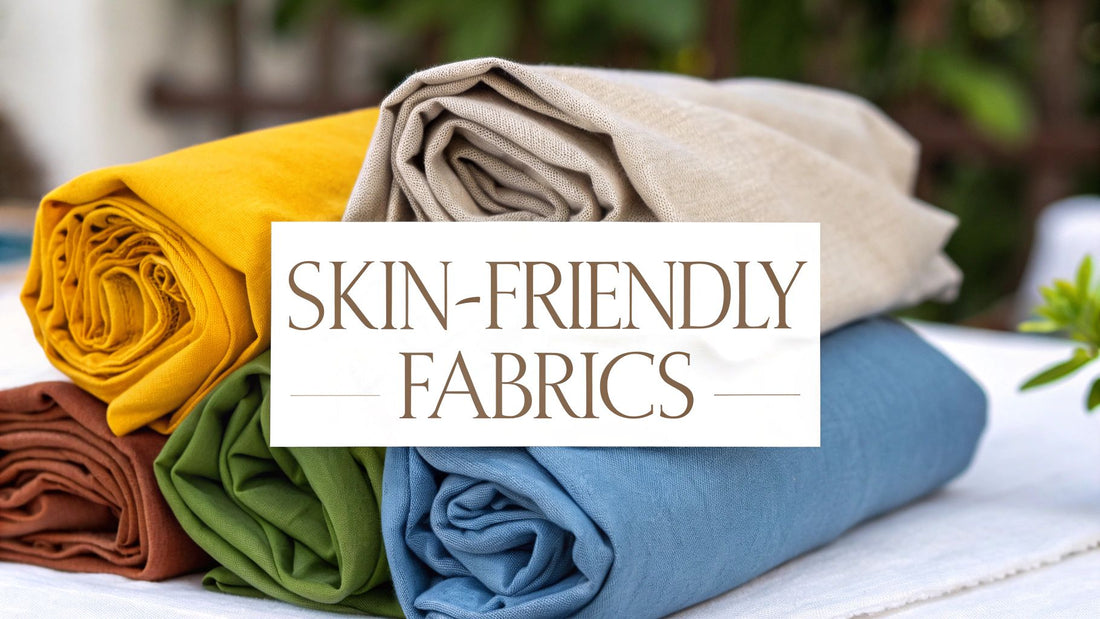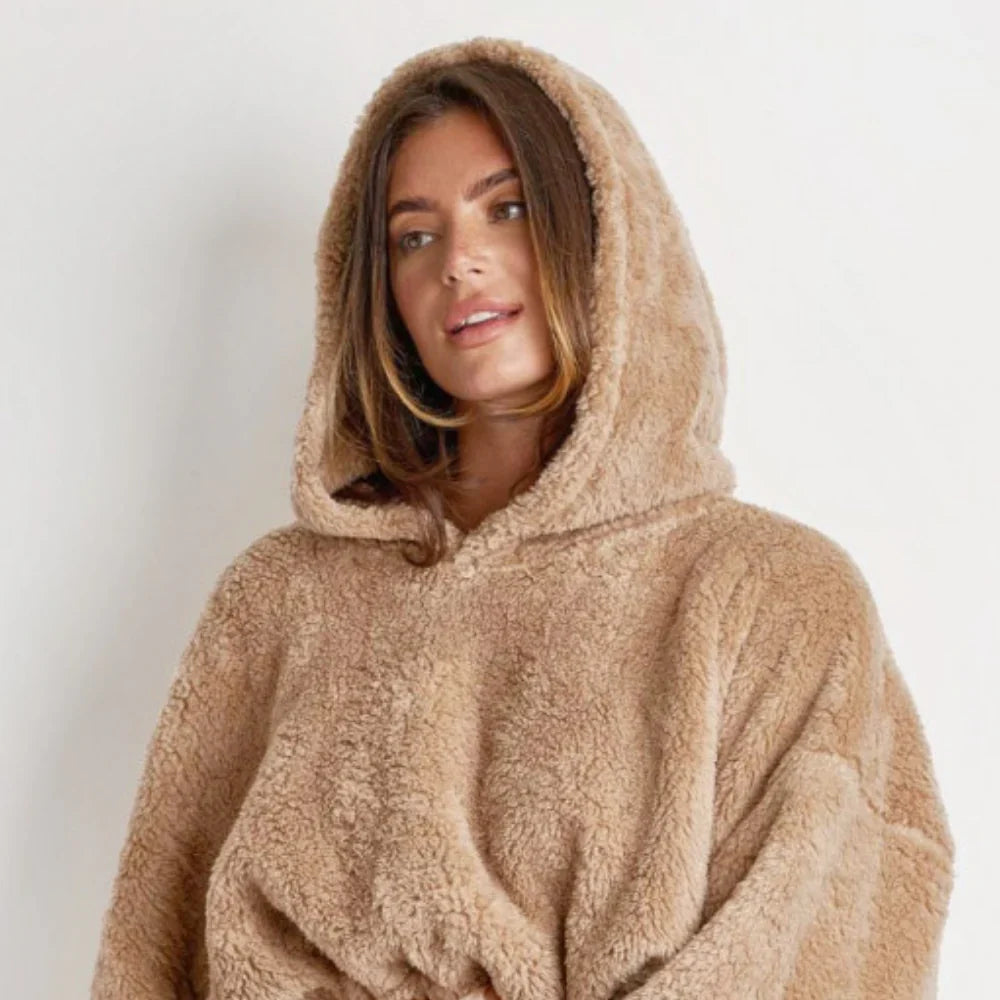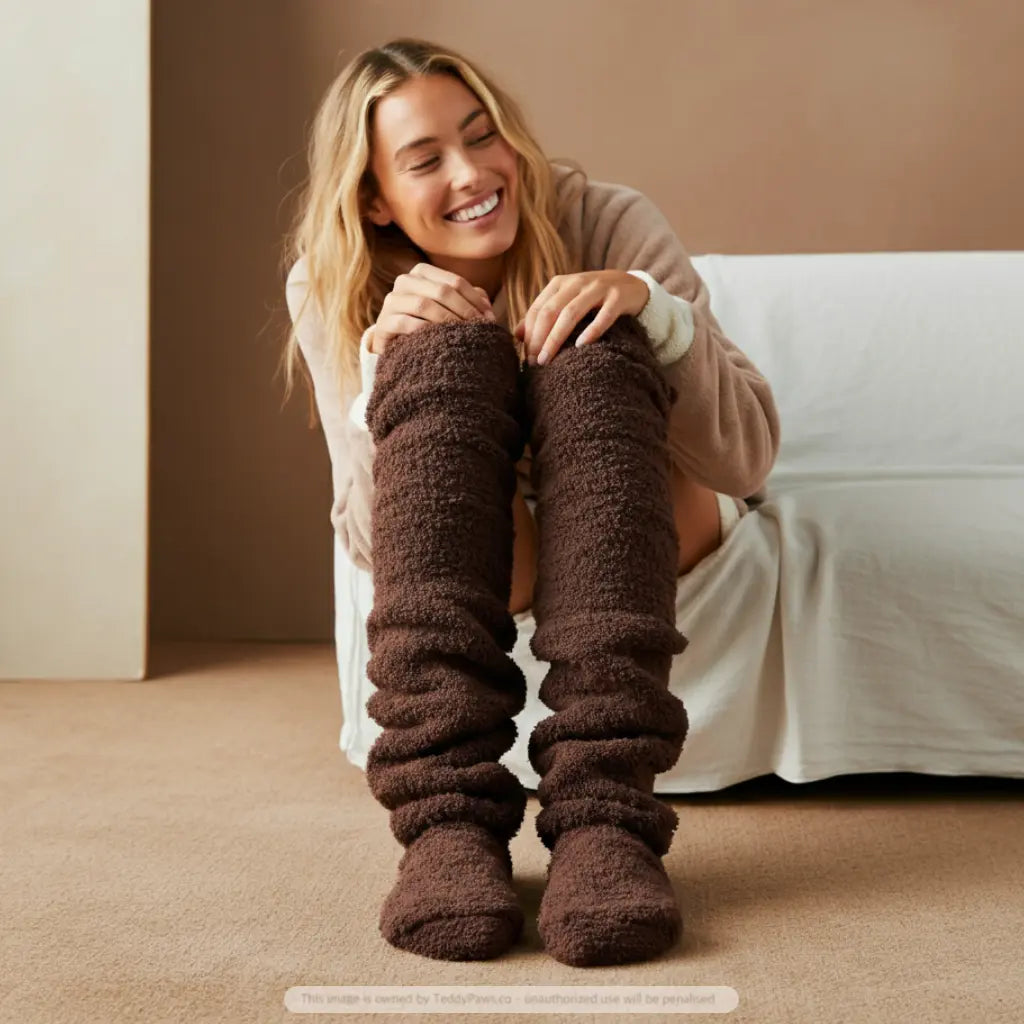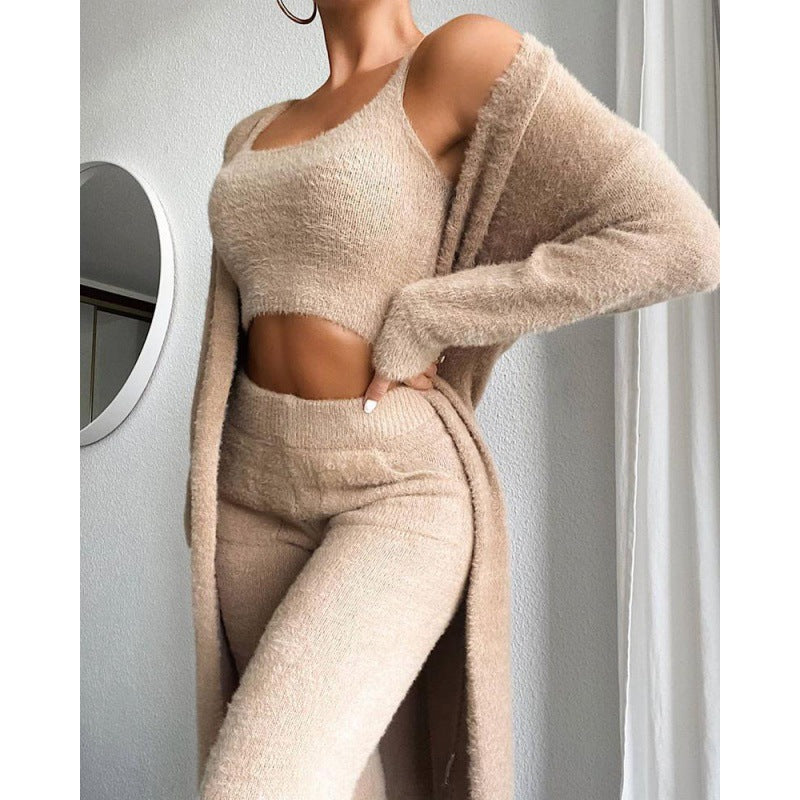
Your Ultimate Guide to the Best Fabrics for Sensitive Skin
Share
When itching and irritation dictate your wardrobe, finding the right fabric isn't just about comfort—it's about reclaiming your life. Stop guessing and start choosing. The best fabrics for sensitive skin are breathable, natural fibers like organic cotton, silk, and bamboo. These materials let your skin breathe, while synthetics trap heat and trigger flare-ups. Your relief starts now.
Your Guide to an Itch-Free Wardrobe
If your clothes are in a constant battle with your skin, you're not alone. You're part of a massive, growing group. A staggering 71% of people worldwide now report having sensitive skin, a number that has shot up by 55% in just two decades. This huge jump shows why finding skin-friendly solutions is no longer optional—it's critical for your daily well-being. Learn more about the rise in sensitive skin concerns.
Think of your clothes as a second skin. You wouldn't put harsh chemicals on your face, so why wrap your body in them all day? For anyone dealing with conditions like eczema, which affects over 31 million Americans, a seemingly innocent polyester shirt can feel like being wrapped in plastic, trapping sweat and creating the perfect storm for irritation.
The right fabric isn't a luxury; it's a foundational step toward managing sensitive skin. It can be the difference between a day of calm comfort and a day of distracting, painful flare-ups.
To start making smarter choices right away, let’s quickly break down how different fabrics stack up.
Quick Guide to Fabrics for Sensitive Skin
This handy table gives you a quick-reference guide to the best (and worst) fabrics out there. Use it to immediately identify what to buy and what to avoid.
| Fabric Type | Best For Sensitive Skin? | Key Benefit | Primary Drawback |
|---|---|---|---|
| Cotton | Yes | Highly breathable and soft | Can hold moisture |
| Silk | Yes | Smooth and hypoallergenic | Delicate and expensive |
| Bamboo | Yes | Naturally antibacterial and soft | Can be chemically processed |
| Wool | No | Very warm | Can be scratchy and irritating |
| Polyester | No | Durable and cheap | Not breathable; traps sweat |
| Nylon | No | Stretchy and strong | Poor breathability; can cause chafing |
As you can see, natural fibers are almost always the winning choice for keeping skin happy and calm.
The difference is clear when you look at the data. This chart shows just how much more irritating some common fabrics can be compared to others.

The numbers speak for themselves. Natural fibers like cotton are worlds away from synthetics like polyester when it comes to irritation. Now that you understand these core differences, you can start building a wardrobe that actually works with your skin, not against it. Your journey to an itch-free life starts now.
Why Your Clothes Are Irritating Your Skin

Ever pulled on a sweater that looks impossibly soft, only to feel like you’re wearing a cactus? It's not in your head. When you have sensitive skin, your natural protective barrier is compromised, making it extra reactive to friction, chemicals, and trapped moisture.
Your skin is a shield. A healthy one is strong, but sensitive skin has invisible cracks in its defenses. When your clothes feel like an itchy nightmare, it's one of three culprits doing the damage. Your action plan starts with identifying these enemies so you can build a wardrobe that soothes and protects.
The Problem with Rough Textures
The most obvious irritant is the physical feel of the fabric. Materials with coarse, stiff fibers—think traditional wool or cheap acrylics—create constant friction against your skin. For someone with a rock-solid skin barrier, this is no big deal.
But for you, it’s a whole different story. That constant rubbing is like taking sandpaper to an already delicate surface. It physically aggravates the skin, kicking off a chain reaction of redness and inflammation. This is a direct trigger for flare-ups, which makes choosing soft-to-the-touch fabrics an absolute must.
When Your Clothes Can't Breathe
Just as important as texture is breathability. Many synthetic materials, like polyester and nylon, are essentially plastic. They're great at repelling water, but that also means they don't let air flow freely or allow moisture to escape. It's like shrink-wrapping your skin.
When sweat gets trapped against your skin, it creates a warm, damp environment—the perfect breeding ground for irritation and bacteria. This moisture seeps into those tiny cracks in a compromised skin barrier, leading directly to itching and rashes.
This is why choosing breathable fabrics isn't just a preference; it’s a critical strategy for keeping your skin cool, dry, and calm.
Hidden Chemicals in Dyes and Finishes
Finally, there are the invisible troublemakers: the chemical residues left behind from manufacturing. Many fabrics are treated with a cocktail of chemicals to get vibrant colors or properties like wrinkle resistance.
These substances, including harsh dyes, formaldehyde, and various finishing agents, can linger in the fibers. For sensitive skin, this can easily lead to contact dermatitis. The chemicals used in processing materials are a well-known irritant, and you can learn more about how materials are treated in articles like this one on understanding vegetable-tanned leather.
By keeping these three triggers in mind—rough textures, poor breathability, and chemical residues—you can finally stop the frustrating guesswork. You are now equipped to choose fabrics that bring you genuine relief and comfort.
The Top 5 Fabrics for Ultimate Comfort

You now know which fabrics are enemies of happy skin. It's time to build your team of trusted allies. This is your personal shopping guide for creating a wardrobe that feels like a gentle, comforting hug.
We're going to walk through the absolute best fabrics for sensitive skin, giving you the confidence to make smart, immediate changes to what you wear. The guesswork is over. Your search for real, lasting comfort starts right now.
1. Organic Cotton: The Gold Standard
When it comes to sensitive skin, GOTS-certified organic cotton is the undisputed champion. It’s not your average cotton. It's grown without the nasty pesticides and chemical fertilizers that linger in fibers and cause irritation.
Its fibers are naturally soft and breathable, but the real magic is how absorbent it is. It pulls moisture away from your skin, keeping you dry and comfortable all day long.
Think of it as the clean, pure foundation of any skin-safe closet. When you see that GOTS (Global Organic Textile Standard) label, you’re not just buying cotton; you’re buying a guarantee of purity. Make this your go-to for everything from tees to bedding, starting today.
2. Silk: The Luxurious Protector
Silk is nature’s premium performance fabric. Its incredibly long, smooth fibers glide over your skin with almost zero friction. For anyone prone to chafing, this is a game-changer.
This natural protein fiber is also inherently hypoallergenic and a total nightmare for dust mites, mold, and other common allergens.
But there’s more—silk is a brilliant temperature regulator. It helps keep you cool when it's hot and warm when it's cold, preventing the sweat buildup that kicks off flare-ups. Incorporating beautiful pieces like elegant silk blouses is a fantastic way to treat your skin to this soothing material every day.
Actionable Tip: Always hunt for 100% silk. So many "silky" blends are packed with synthetic fibers that completely undo all the skin-soothing benefits. Your skin deserves the pure, uninterrupted comfort that only the real deal can deliver. Don't settle for less.
3. Bamboo: The Silky Soft Workhorse
Bamboo fabric has earned its reputation for being ridiculously soft—often described as a mix between cashmere and silk. It’s also naturally hypoallergenic and antibacterial, which helps keep your skin feeling fresh and clean throughout the day.
Here's where it really shines: bamboo is 40% more absorbent than even the finest organic cotton. That makes it an absolute superstar at wicking away sweat.
This incredible moisture management is key to preventing the damp, sticky conditions that lead to rashes and irritation. For an active day, a workout, or surviving a humid summer, choosing bamboo delivers both softness and serious performance.
4. Tencel Lyocell and MicroModal: The Eco-Friendly Innovators
Welcome to the future of fabric! Tencel Lyocell and MicroModal are modern marvels perfect for sensitive skin. Both are types of rayon made from sustainably sourced wood pulp—eucalyptus for Tencel and beechwood for Modal.
They’re produced in a closed-loop process that’s much kinder to the environment, so you can feel good about wearing them.
What makes them so amazing for sensitive skin?
- Incredible Softness: Their fiber surface is exceptionally smooth, feeling cool and gentle against the skin. No scratchiness here.
- Superior Moisture Wicking: Both fabrics are even more absorbent than cotton, pulling moisture away from your body like a pro.
- Breathability: They let air flow freely, which is essential for keeping you cool and preventing irritation from trapped heat.
These fabrics are turning everyday basics into sources of pure comfort. In fact, you’ll find that many of the very https://teddypaws.co/blogs/news/softest-loungewear-for-women are crafted from these innovative materials. It’s proof that you never have to choose between feeling good and looking good.
Fabrics That Are a Recipe for Flare-Ups
Knowing which fabrics to embrace is only half the battle. Your real secret weapon against irritation is knowing exactly which materials to kick to the curb. This is your official 'do not buy' list—the common culprits notorious for trapping heat, causing friction, and triggering miserable flare-ups.
Think of certain synthetic fabrics as plastic wrap for your skin. They create a suffocating barrier that stops air from circulating, trapping sweat and heat right up against your body. This warm, moist environment is a perfect breeding ground for irritation and redness. Learning to spot these on a clothing label is a game-changing first step toward lasting comfort.
The Synthetic Offenders: Polyester, Nylon, and Acrylic
Polyester, nylon, and acrylic are the big three you absolutely need to watch out for. Sure, they’re cheap and durable, but they offer zero breathability. Wearing them is like locking your skin in a sauna, ensuring any moisture stays put—a direct trigger for eczema and contact dermatitis.
These fabrics are also hydrophobic, meaning they repel water instead of absorbing it. This causes sweat to just bead up and sit on your skin, creating that sticky, clammy feeling that almost always leads to itching.
For anyone with sensitive skin, these synthetic materials are a disaster waiting to happen. Ditching them isn't just a friendly suggestion; it’s a non-negotiable rule for preventing discomfort before it even starts. Do yourself a favor: check your labels now and commit to phasing them out.
Deceptively "Natural" Irritants: Wool and Linen
While natural fibers are usually a safe bet, not all are created equal. Some can be just as problematic as synthetics, but for entirely different reasons.
-
Conventional Wool: The fibers of standard wool have microscopic, scaly surfaces that act like tiny bits of sandpaper against sensitive skin. This constant mechanical friction is a well-known cause of itching and rashes. While some superfine Merino wool can be an exception, it’s often safer to avoid wool altogether if your skin is highly reactive.
-
Rough Linen: High-quality, well-worn linen can be wonderfully breathable, but cheaper, coarser linen is a different story. It can feel stiff and abrasive, and its rough texture can easily cause chafing, especially in areas where clothing fits a bit more snugly.
Your immediate action plan is simple: become a meticulous label-reader. The next time you shop, your mission is to scan for these problem fabrics and confidently place them right back on the rack. This one simple habit will dramatically reduce your exposure to irritants, giving your skin the calm, breathable environment it needs to finally heal and thrive. Stop gambling with your comfort—start rejecting these materials today.
Your Skin-Safe Laundry and Care Routine

You've found the perfect organic cotton shirt or the softest bamboo pajamas. Huge win! But if you toss them in the wash with the wrong products, you undo all that good. Your laundry routine is the final, crucial step in protecting your clothes and your sensitive skin.
This is about more than just getting things clean. It’s about turning your wardrobe into a true safe haven. The right care routine ensures the best fabrics for sensitive skin stay gentle, breathable, and totally free from irritating chemicals. Don't skip this step.
Choose Your Detergent Wisely
This is the single biggest change you can make, and it’s a game-changer. Your clothes are like sponges, soaking up whatever you wash them in. That residue then sits against your skin all day. Switching to a gentle, hypoallergenic detergent isn't just a suggestion—it’s a must.
Finding a formula that won't trigger a reaction is key. For some great options, check out this guide to the best non-toxic laundry detergents for sensitive skin. When you're shopping, hunt for products that are:
- Fragrance-Free: Artificial scents are a top culprit for contact dermatitis. Reject them immediately.
- Dye-Free: Those bright blue liquids? The color adds nothing to cleaning power and is just another potential irritant.
- Hypoallergenic: This label means the product was specifically formulated to minimize allergic reactions. Make it a priority.
Ditch Conventional Fabric Softeners and Dryer Sheets
If you have sensitive skin, traditional fabric softeners and dryer sheets are your enemies. They create that "soft" feeling by coating every fiber of your clothes with a waxy, chemical-filled film. This coating clogs the natural pores in breathable fabrics, trapping heat and moisture right against your skin—a recipe for irritation.
It's a massive market, with the global fabric softener industry expected to reach USD 22.55 billion by 2032. A huge chunk of that—37.8%—is in North America, where there's a growing demand for products that are tested to be safe for skin. This just goes to show how many people are realizing the impact these products have and are looking for better alternatives.
The takeaway is clear: stop using products that leave a chemical film on your clothes. Your skin needs to breathe, and these products actively prevent that.
Ready for some simple, skin-safe swaps? Here's your action plan:
- Use White Vinegar: Add half a cup of distilled white vinegar to your washer's rinse cycle. It works as a natural softener and gets rid of detergent residue.
- Switch to Wool Dryer Balls: These are a fantastic, reusable alternative to dryer sheets. They soften clothes naturally, cut down on drying time, and reduce static. If static is a major battle for you, here's how to remove static from clothes.
- Run an Extra Rinse Cycle: This free trick ensures every last bit of detergent is washed away, leaving nothing behind to bother your skin.
How to Shop for a Sensitive Skin Wardrobe
You're ready to build a wardrobe that finally feels as good as it looks. Armed with this know-how, you can stop guessing and start shopping with confidence. This is your game plan for making smart, strategic upgrades that bring instant relief.
The first step is to become a master label-reader. Look past the fabric name and hunt for certifications that matter. A label like GOTS (Global Organic Textile Standard) or OEKO-TEX is your best friend—it’s a guarantee the garment is free from the harsh chemicals and toxic dyes that trigger flare-ups. Insist on these certifications.
Prioritize Your Purchases for Immediate Relief
You don’t need to replace your entire closet overnight. Instead, focus your budget on the pieces that have the most direct, prolonged contact with your skin for the biggest impact.
-
Underwear and Base Layers: These items sit right against your most sensitive areas. Switching to organic cotton or silky-soft MicroModal here isn't just a good idea; it's a non-negotiable for immediate comfort.
-
Sleepwear and Loungewear: Your skin does its best repair work while you sleep. Surround it with materials that are soft and breathable. To get a better feel for what to look for, check out our guide on finding the most comfortable loungewear for women.
-
Bedding: Your sheets and pillowcases are in contact with your skin for hours every night. Making the switch to organic cotton or bamboo can be the difference between a restless, itchy night and a peaceful sleep. Don't wait on this.
Final Checks Before You Wear
Once you've found that perfect piece, there are just two more golden rules. First, always lean toward looser, more relaxed fits. Tight clothes create friction and trap sweat—a perfect recipe for irritation.
Always, always wash new clothes before you wear them. Garments are often treated with sizing agents and finishing chemicals like formaldehyde to keep them looking crisp in stores. These residues are a huge culprit behind skin reactions, but a single wash cycle is usually all it takes to remove them.
This mindful approach to shopping is part of a much bigger shift. The global fabric care market is expected to balloon to USD 210.2 billion by 2035, and a huge part of that growth is from people actively looking for non-irritating options. With 68% of consumers now buying these kinds of specialty items online, building a wardrobe that loves your skin back has never been easier.
Got Questions About Skin-Friendly Fabrics? We've Got Answers.
When your skin is sensitive, navigating the world of fabrics can feel like a minefield. One wrong choice and you're left with itchy, irritated skin. Let's clear up some of the confusion and get straight to the answers you need to build a wardrobe that feels as good as it looks.
Is 100% Cotton Always the Safest Bet?
You'd think so, right? While 100% cotton is a great starting point, the real story is in how it's grown and processed. A lot of conventional cotton is treated with harsh pesticides and finished with chemical dyes that can wreak havoc on sensitive skin.
If you want to be sure you're getting the good stuff, always look for GOTS-certified organic cotton. That certification is your peace of mind, guaranteeing the fabric is pure and free from nasty toxins all the way from the seed to your shirt.
Can I Wear Wool if My Skin is Reactive?
This is a tricky one. Traditional wool is famous for being an irritant—its coarse, scaly fibers are practically designed to make you itch. That said, some people find they can handle ultra-fine Merino wool without any issues.
If you’re feeling brave, look for labels that specifically say 'ultrafine' or 'superfine' Merino and do a patch test on a small area of skin first. Honestly though, for most of us with super reactive skin, it’s probably safer to just skip wool altogether and stick with something smoother.
What’s the Deal with Activewear?
Finding activewear that doesn't irritate your skin can feel like an impossible task, especially since most of it is made from synthetics like polyester. The key is to look for smarter blends.
Your best bet is to find performance fabrics that incorporate skin-friendly materials like Tencel Lyocell or bamboo. These give you that great moisture-wicking power but feel much softer against your skin. Also, look for activewear with flatlock seams to minimize chafing, and make it a rule to change out of your workout clothes the second you're done.
Your comfort should never be an afterthought. At TeddyPaws, we craft our ultra-soft homewear to feel like a gentle hug, using only the coziest, skin-friendly materials. It's time to stop putting up with irritation and start living in cloud-like comfort. Explore our collection today!










